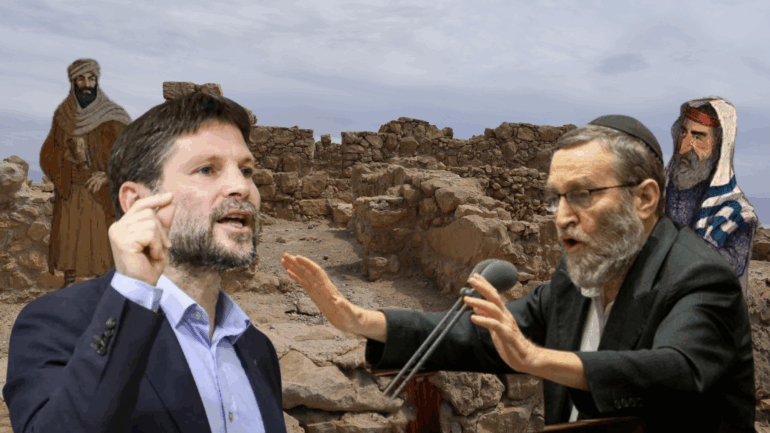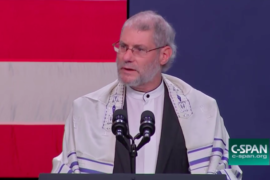Since October 7, 2023, the growing sense of national consciousness in Israeli society has partially penetrated into the Ḥaredi sector.
Despite the media’s sensationalized focus on the draft question (and the psychological barriers created by constantly antagonizing that contradiction), participation in national affairs – from increased military service to aiding displaced Israelis to tying tzitzit and organizing bar-b-ques for soldiers – has become common in much of the Ḥaredi community.
I myself have even witnessed overt expressions of what some might call “Zionism” in the streets and yeshivot of Jerusalem’s Geula neighborhood.
Newsworthy exceptions have mostly come from fringe voices and a leadership out of touch with their public. Some Ḥaredi rabbis have also taken hardline stances in response to efforts at drafting Ḥaredim into the military — an effort that many criticize for not being aggressive enough, while others condemn for lacking sensitivity to legitimate Ḥaredi concerns.
But a recent political spat between two members of the governing coalition has offered us some insight into the core issue at stake.
During a radio interview last week, Finance Minister Betzalel Smotritch (Religious Zionism) sparked controversy by stating that returning our hostages “is obviously a very important goal, but if you want to destroy Hamas so that there can’t be another October 7, you need to understand that there can’t be a situation where Hamas remains in Gaza.”
The finance minister’s public “admission” that the primary objective of Israel’s war against Hamas has never been the release of all our hostages but rather the complete neutralization of Hamas as a threat drew condemnation from several sectors of Israeli society, the Jewish Diaspora, and even the international community. In fact, many came to the conclusion that Smotrich was expressing the position of Prime Minister Binyamin Netanyahu (Likud).
But the most noteworthy condemnation in relation to our topic here seems to have come from Smotrich’s coalition partner, lawmaker Moshe Gafni (United Torah Judaism), and a number of his close political allies.
Gafni compared Smotrich to the anti-Roman Sicarii guerrillas of the late Second Temple period, for whom “the national issue was more important than human life.”
In response, Smotrich pointed out that only someone who still suffers from an “exile mentality” and doesn’t relate to renewed Jewish political independence in our land as the long yearned for “return to Zion” is capable of “comparing the current reality to the period of the destruction of the Second Temple.”
Smotrich’s response went to the core of the difference between two distinct approaches to Israel’s Torah – what we can refer to as that of the tribe of Yehuda (or perhaps Levi) represented by Smotrich and that of the tribe of Yissakhar represented by Gafni.
The Ḥaredi worldview, represented by Gafni, essentially transforms the Torah into a religion – something the Babylonian Talmud tells us explicitly.
“…Rabbi Ḥiyya bar Ami said in the name of Ulla: Since the day the Temple was destroyed, the Holy One, Blessed be He, has only one place in His world, only the four cubits of halakha alone…” (Brakhot 8a)
The reduction of Jewish life to the realms of ritual and law for individuals and communities made sense during Israel’s exile from our land. It was the best we could hope for; the most we could preserve. The Torah’s position on governmental structures, warfare, or socioeconomic issues had very little practical relevance when Jews were living in foreign lands at the mercy of host nations. What we can call the Torah of Yissakhar – one that narrowly focuses on the “four cubits of halakha” – became the mainstream understanding of Torah for the majority of the Jewish people in exile over several centuries.
But with the return of the Jewish people to our land and to political independence, Israel’s engagement with our Torah should expand and return to its pre-exilic grandeur. Since the return to Jerusalem in 1967, a new approach to Torah has spread throughout Israel – an approach that goes far beyond the personal realm and deals directly with national and international questions.
The extension to the realm of “political” issues isn’t the only feature differentiating the Torah of Yehuda from the Torah of Yissakhar. The core distinction is that Yehuda’s Torah is firmly contextualized within an understanding for the people of Israel’s historic mission – a mission that requires political independence in our land and calls on us to be ready to sacrifice in order to achieve and maintain that independence.
While the Torah of Yissakhar centers the individual, the Torah of Yehuda centers the collective. It therefore makes sense that Smotrich would, as Gafni said, see “the national issue” as “more important than human life.”
This brings us back to Gafni’s Sicarii comparison.
The heroic Sicarii – ideological purists of the Zealot movement who famously took their own lives at Masada rather than be enslaved by the Romans – prioritized the collective Jewish people and our historic mission over their own lives and the lives of their families.
According to the Ḥaredi understanding, the Zealots were the bad Jews; the extremist fringe who caused the destruction of Jerusalem. But that’s certainly not the only way to see it.
The controversial historian Josephus tells us that during the late Second Temple period, the majority of young Jews identified with the Zealot philosophy – a philosophy Josephus claims only differed from the Pharisees in that they saw an immediate Torah obligation to ensure Jewish sovereignty over our land.
In this sense Gafni clearly does represent the Pharisees while Smotrich represents the Zealots. At a time when the Jewish people are heading into exile and need to convince powerful gentiles that we’re not a threat to them, the Pharisee position makes sense. But at an historic moment when Israel is once again sovereign in our land and forced to deal with hostile nations seeking to rob us of that sovereignty, the Zealot line might actually be more appropriate.
It should also be noted that Gafni is a far better politician than Smotrich.
So long as the Ḥaredi draft issue remains prominent in the press, Smotrich’s national-religious sector is largely aligned with the majority of the Israeli public against what’s being characterized as irresponsible Ḥaredi draft dodging. In fact, the national-religious community has notably lost more young men fighting in this war than any other sector of Israeli society.
But if Gafni can successfully shift attention to another wedge issue – between those prioritizing the return of hostages over military victory against Hamas (and a potential Jewish return to Gaza), he can position his Ḥaredi faction as being in line with the media-driven prioritization of the hostages and in opposition to the ultra-nationalist “messianism” of Smotrich and his national-religious voters.
With elections roughly a year away, Gafni is likely already in campaign mode.
Seeing that most polls show Smotrich barely making it into the next Knesset, chances are high that he could once again run together on a joint list with Internal Security Minister Itamar Ben-Gvir’s Otzma Yehudit faction.
This is significant because Otzma Yehudit, which represents the tribal force of Shimon (a reasonable projection for the Ḥaredi sector’s trajectory), attracted many of the young Ḥaredi voters last time around and will likely do so again. By maligning Smotrich (and by extension Ben-Gvir) as a Zealot, Gafni is telling his voters why they should vote for a Ḥaredi party.
The Torah of Yissakhar had an important role to play during our nearly 2,000 year exile from our land. It kept the coals of Torah burning – even if only in a truncated form. Perhaps one could argue that Yissakhar still has an important contribution to make to our national development in the post-Zionist era. But it makes sense that Yissakhar’s approach should no longer be the dominant mainstream understanding of Torah, and many of the Ḥaredi community’s younger generation should be migrating to other tribes that favor more active participation in Israel’s redemption process.





